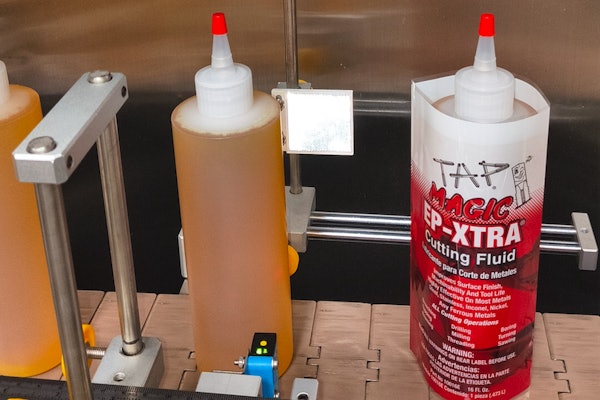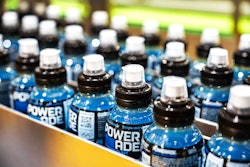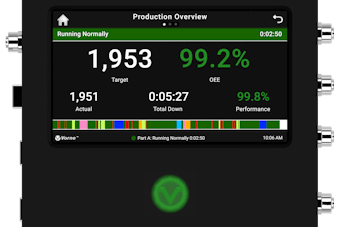Flexible packaging is widening its reach as a preferred option as marketers fine-tune the specific results they are trying to achieve through packaging, and package development teams gain a better understand of what different resins can or can’t do. Creative teams with clear branding objectives and who do their homework on the options available in film can harness flexible packaging’s strengths through design to achieve their goals more effectively.
A well-executed flexible package design not only allows for attractive aesthetic finishing touches, it also can help protect the product and improve total bottom-line results. Well- thought-out flexible packages also can reduce the use of materials and energy, and require less space on trucks and in the pantry. Savvy brand owners are embracing these all- encompassing benefits of flexible packaging as they craft product messages that make eco- friendliness a cornerstone of the brand strategy. But to be successful, any effort involving flexible packaging requires a working knowledge of materials, film resins, application techniques, the capabilities and limitations related to film shrinkage, and printing, among other considerations.
“All flexible packaging done well is a combination of technology and art,” says Jackie DeLise, vice president of new business development at Zunda Group, a design agency. “And portability is perhaps the key word when you’re thinking about working with flexible packaging.” Here are five considerations to get you started on the road to successful design in flexible packaging.
1. Determine your objectives. Is flexible film the star of your package or a supporting cast member? What is your product’s distribution channel? Will the package be in stores only or will it have to survive plenty of handling in the harsh, single-parcel fulfillment environment of products ordered online? If the latter distribution channel is included in your marketing effort, then reverse-printing or special coatings to guard against scuffing must be considered. Will the package lay flat to preserve space in the pantry or stand up in the refrigerator? These and other decisions affect many aspects of flexible package design.
2. Assess the product’s planned duration on shelf and flexible packaging’s role in the marketing effort. It would drive up costs to make design changes on multiple components of a short-run package, but that’s precisely what too many brand owners do—at somewhat avoidable additional cost. What if printing on just one of the elements—the label—changed?
In coffee, for example, new batches can require only a change in graphic elements on the label on a bag. The rest of the package remains the same. Seattle-based Made in Washington Stores took this very approach in introducing and retiring new flavor varieties of its Roasted in Seattle coffee brand. The three-ply silver foil laminate bags didn’t change from batch to batch. New roasts were signaled by changing graphics on the pressure-sensitive labels applied to the bags, flexo-printed in black plus two custom colors. The clever labels helped Roasted in Seattle’s sales surge during a recent holiday period, with minimal additional cost.
3. Understand what appeals to consumers. Product differentiation is more important than ever at today’s retail shelf. A 2010 American Marketing Association/Market Force Information poll found that only 8% of consumer purchases were attributable to advertising, while 35% of their purchase decisions were attributable to packaging. In addition, it’s known that squeezable, spouted pouches are effective in courting kids, and that vented flexible bags in food help consumers save meal preparation time and steps. Know your consumers and what they like.
4. Establish package performance criteria. An important question to answer early in developing a quality flexible package is this: What does the package need to do, from a materials standpoint, to perform well in the market?
The answer to this question could take in everything from package visibility (i.e., robust graphics and structures that improve findability on shelf ) to pairing the right inks and package surfaces for optimum legibility to selecting the appropriate material, taking variables such as package surface and contour into consideration.
Proper film selection is critical to success as well. Consider pressure-sensitive film, which no longer is just for labels. Brand owners are now using it for product security, authenticity, and consumer protection as well. When choosing the appropriate product security method (overt, covert, or forensic, i.e., traceability), choosing or developing the right pressure-sensitive film to help support and convey the desired authenticity state is key to the early design and long- term security and profitability of the product.
Marketers and designers, to get the results they want,
also need to understand something about the physical properties of different types of flexible film. This sounds obvious, but horror stories abound about flexible packaging projects that had to be delayed or started over—at great time and cost—because the package that marketing envisioned on a computer screen ran into serious performance issues on a production line, in distribution, or during product use or storage.
Film resins have different properties and perform best under different conditions. Therefore, it is critical to know at the outset what you want, from a functional standpoint, from your flexible package. If your objective is a colorful juice pouch with a spout or a zippered snack bag, the film needs to work well with the fitment to prevent product leakage.
Consider, too, the distribution channel of your product. For example, the lighting in one type of store could be very different from another channel. The aisle widths and lengths also can vary, posing different challenges of flexible packaging. If one package is a flexible bag holding 36 rolls of toilet tissue in a dimly lit club store and another is decorative bag for a brush set at a Sephora store, the level of lighting and the aisle widths will be very different, and they could influence film and coatings selections.
Among other considerations are safety and the environment in which your product will live.
5. Consider the printing process. Packaging consultant Sterling Anthony identifies flexography as the most-utilized printing method in flexible packaging, with gravure coming in a respectable second. He says both methods boast technological advantages that make it more affordable for brand owners to have packaging with high visual impact that includes razor-sharp graphics. More recently, “high-definition” flexo printing offers a higher line screen and increased dots per inch, giving marketers the level of visual detail they need from photography and illustrations.
The question today is this: Is flexo or gravure the right choice for your flexible packaging project? The answer depends on a number of variables, from the size and frequency of package runs and changes to the design, to the nature of the work that needs to be done to budget considerations.
It is recommended that design teams thoroughly understand the role of printing in their packaging project and investigate the strengths and weaknesses of all printing processes that are under consideration before selecting one.
Don’t overlook digital printing as you mull your options. Digital package and label printing is used far less than other printing methods but forecast to triple in growth by 2014, according to Pira International. Brand marketers’ demand for customization and shorter press runs—in part driven
by labeling—will require a closer look at digital printing
to limit dormant inventory and answer retailers’ and consumers’ desires for continually changing merchandise offerings in stores.























